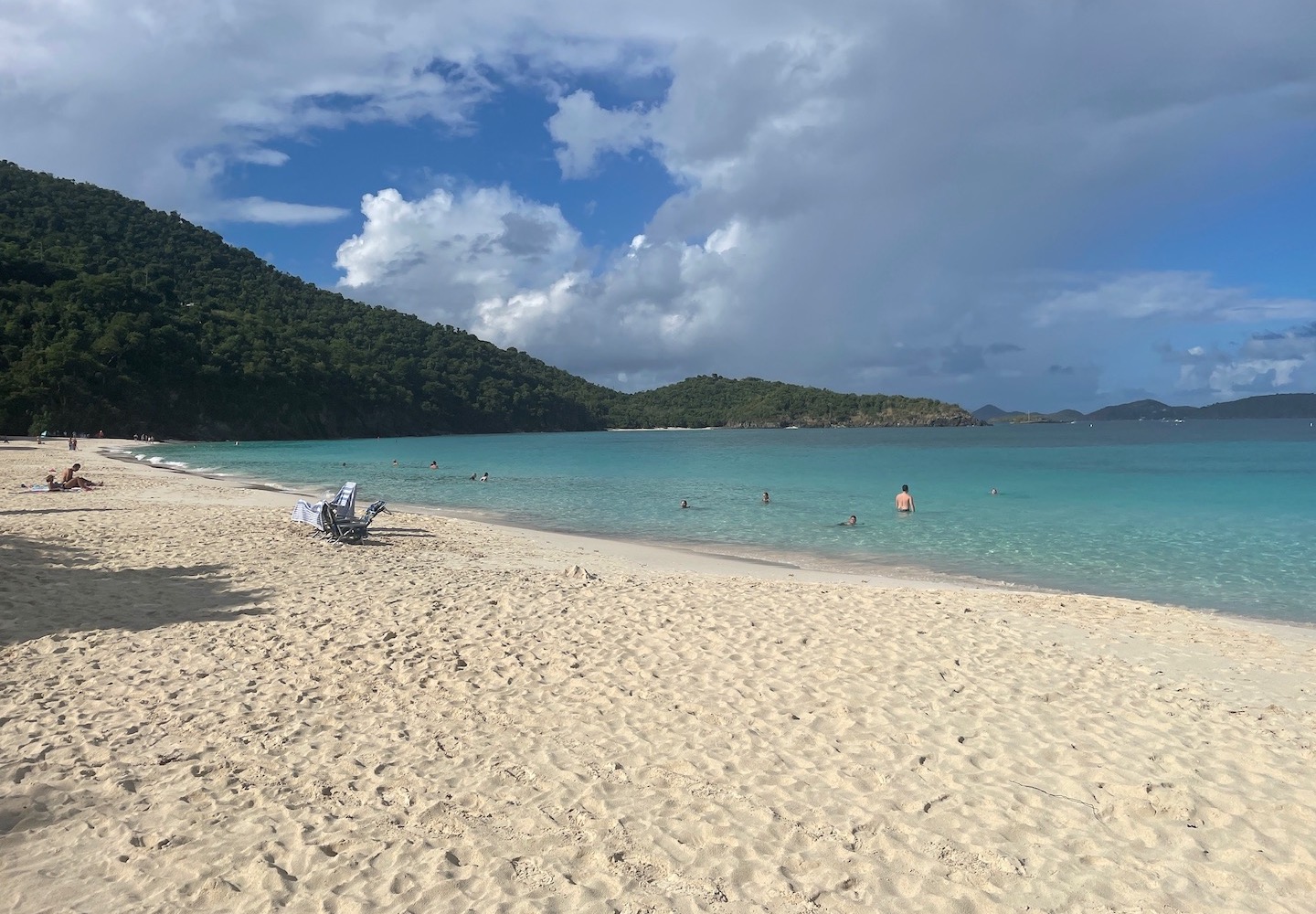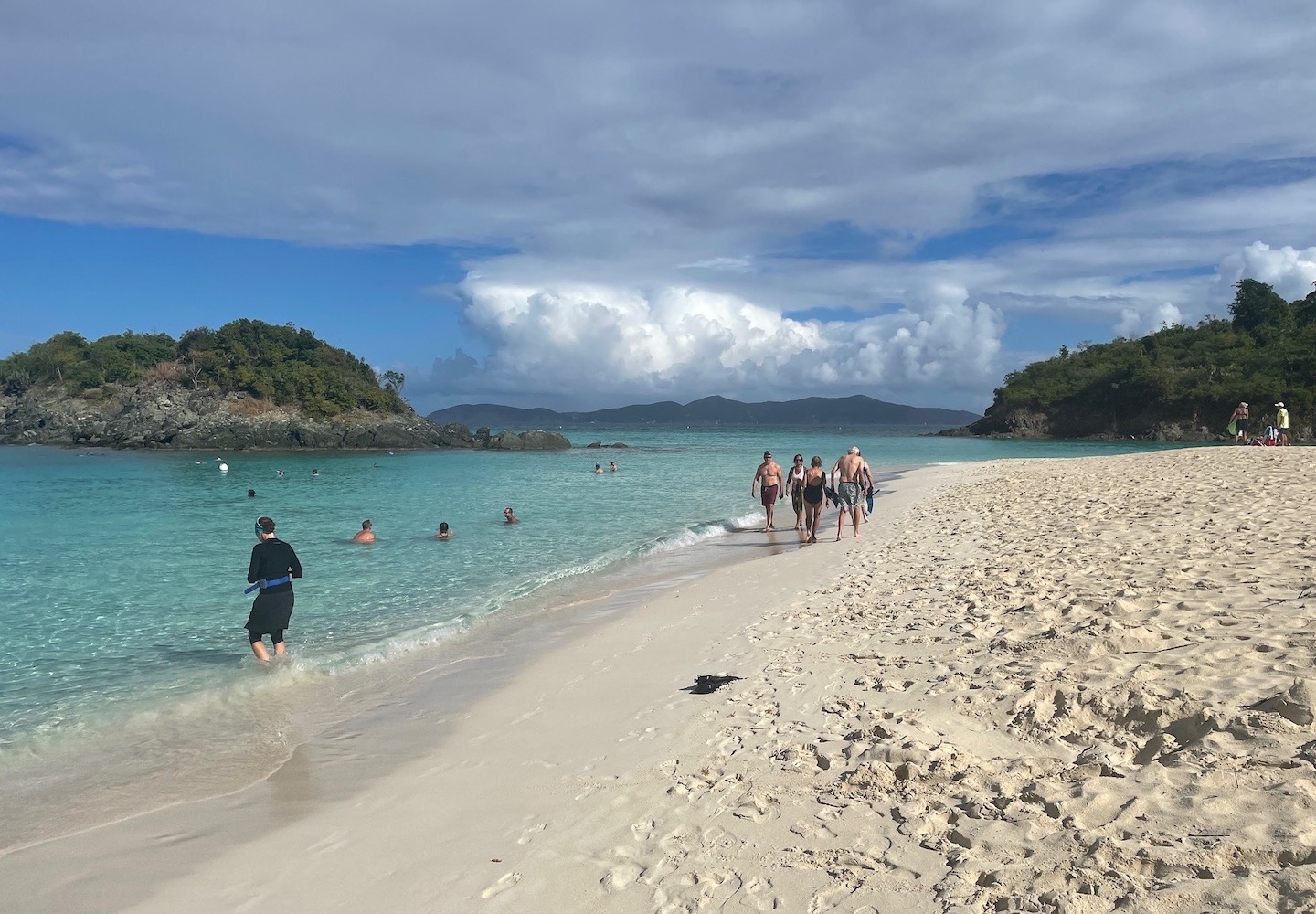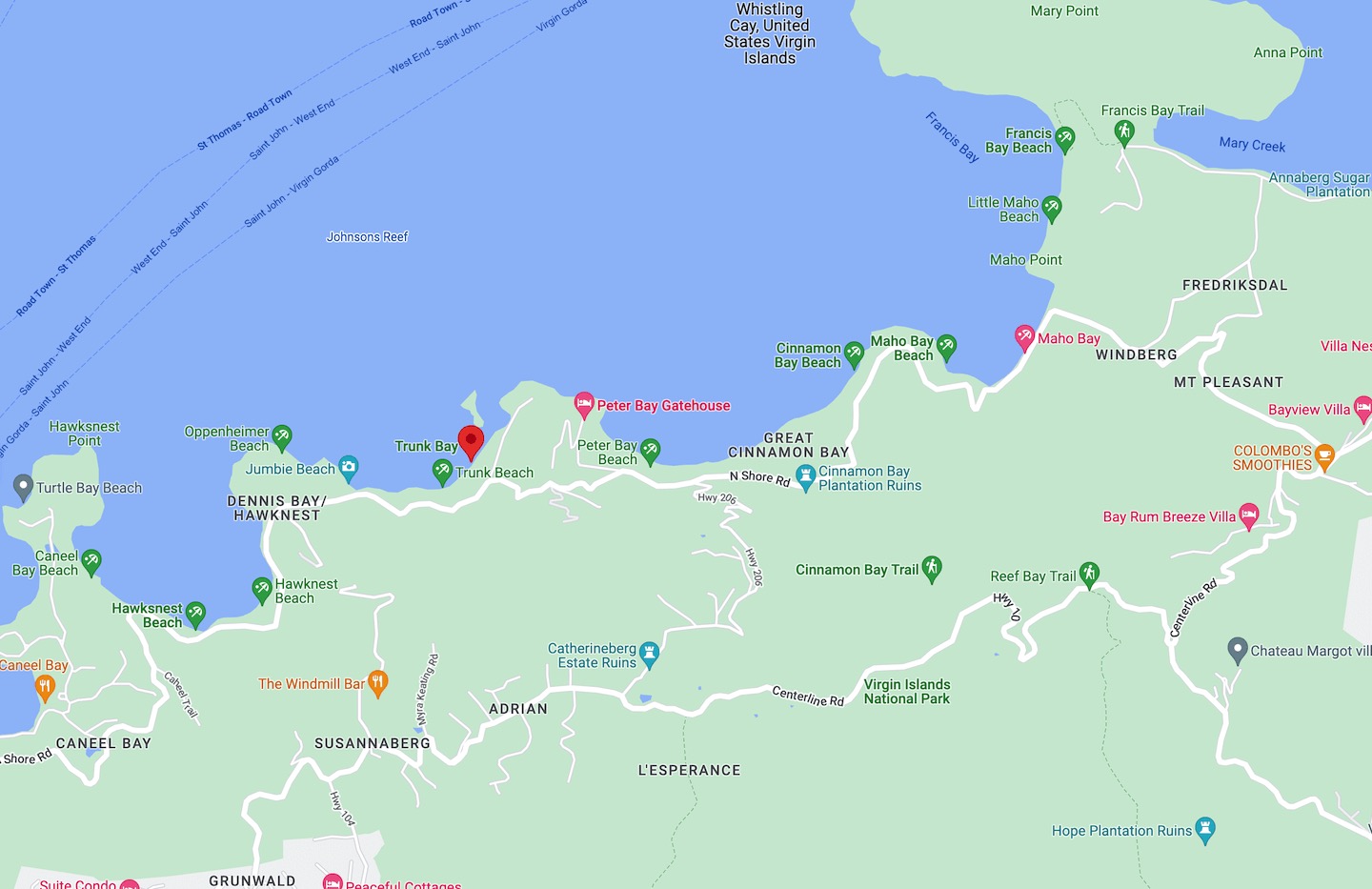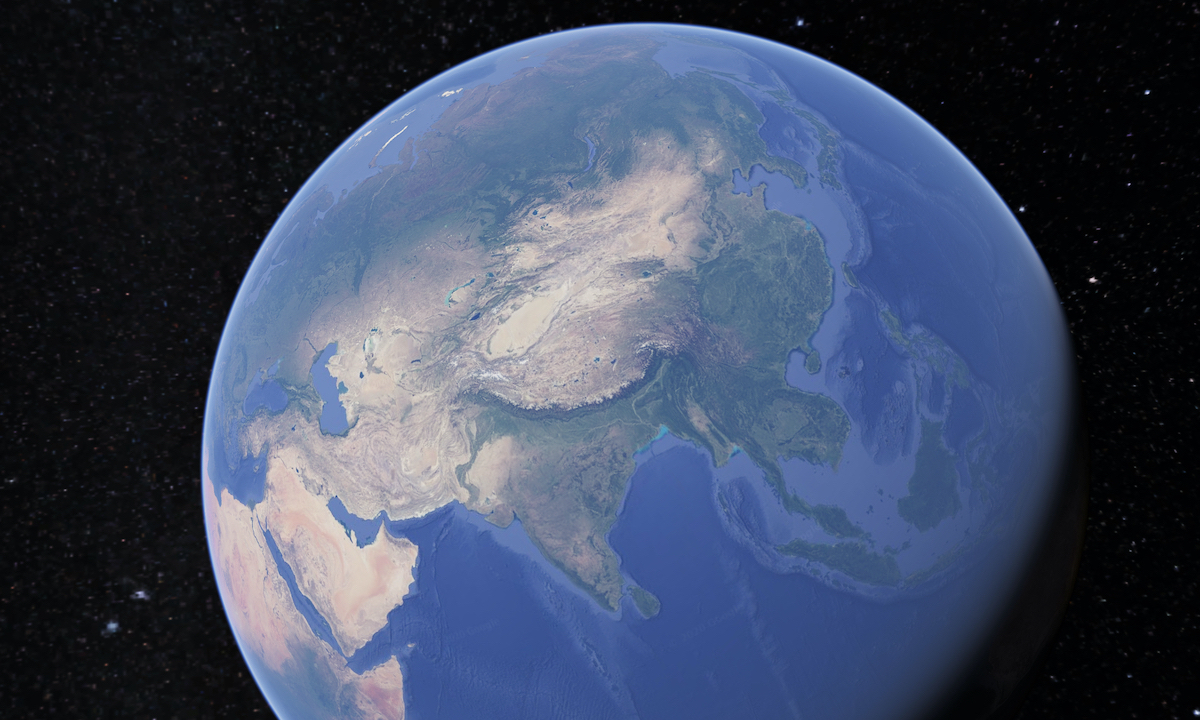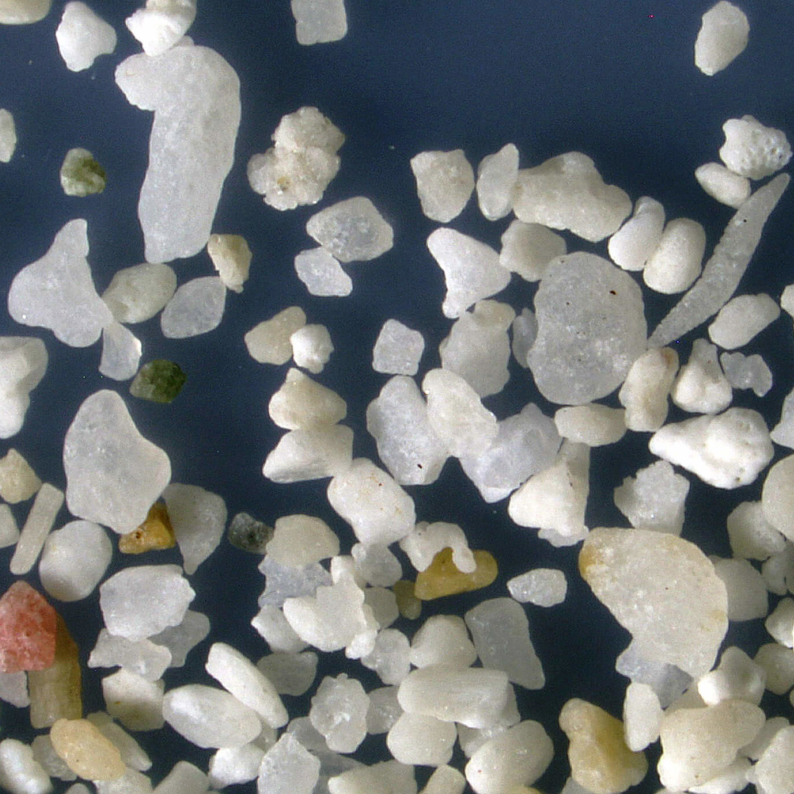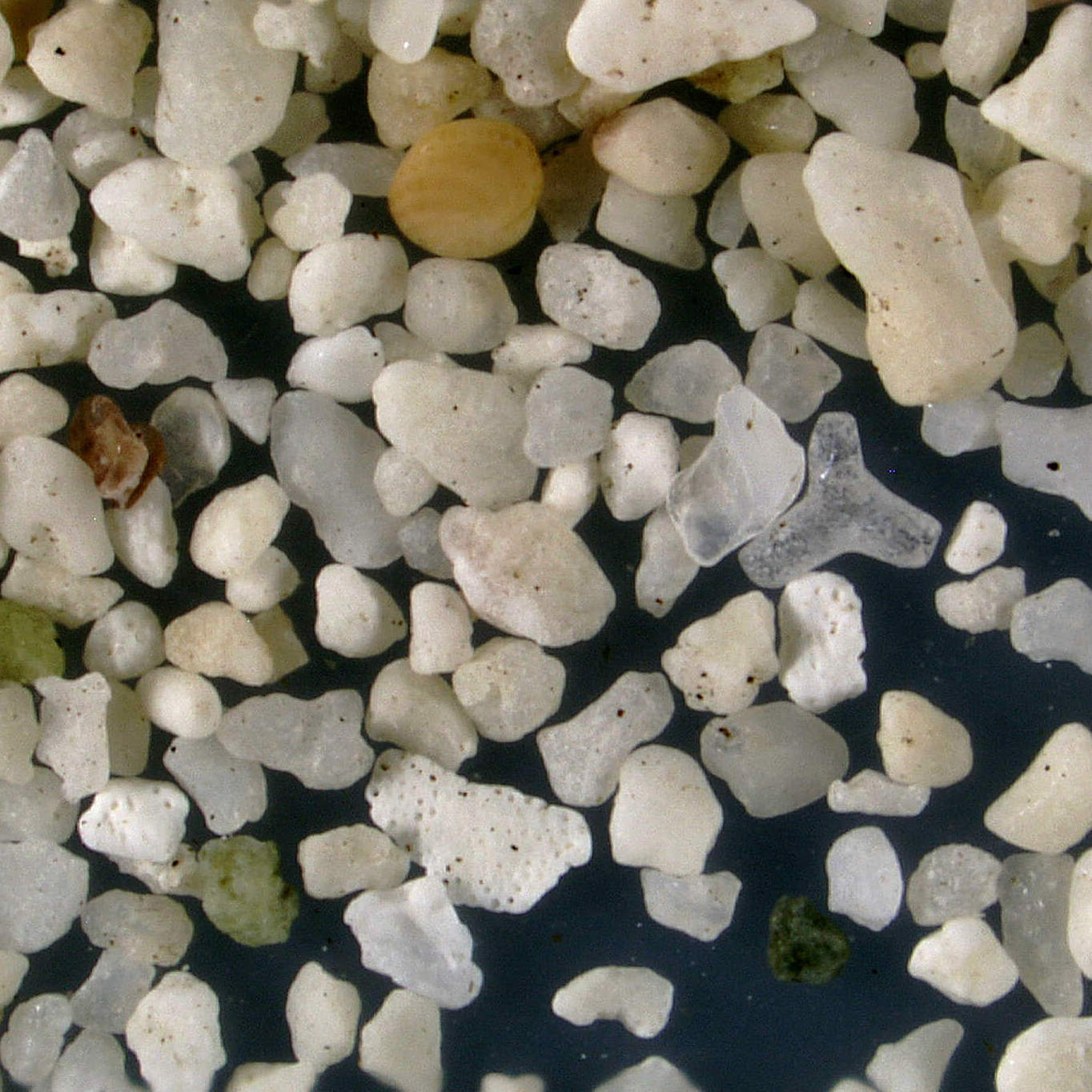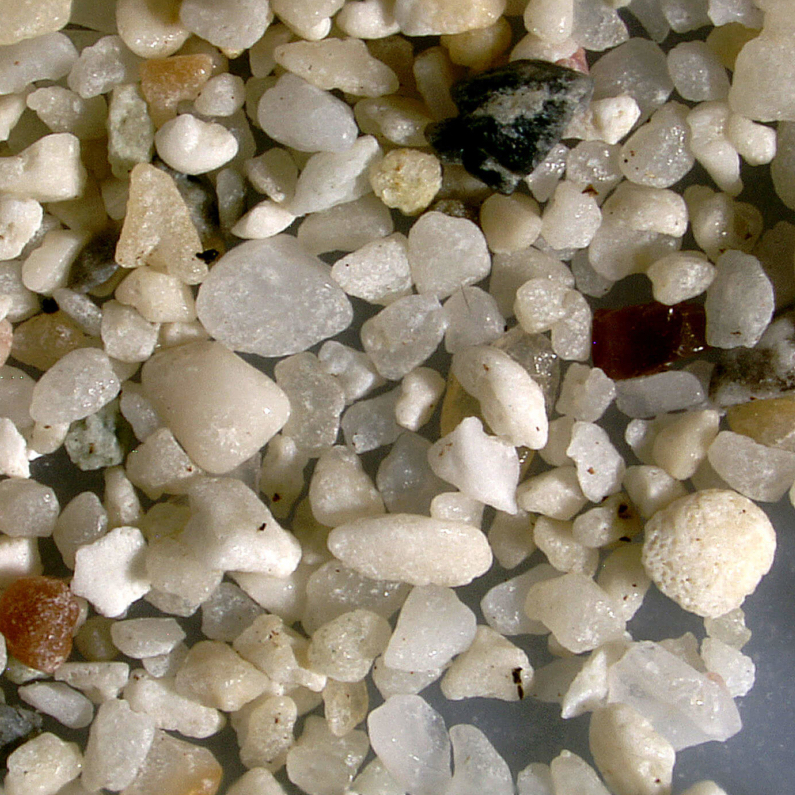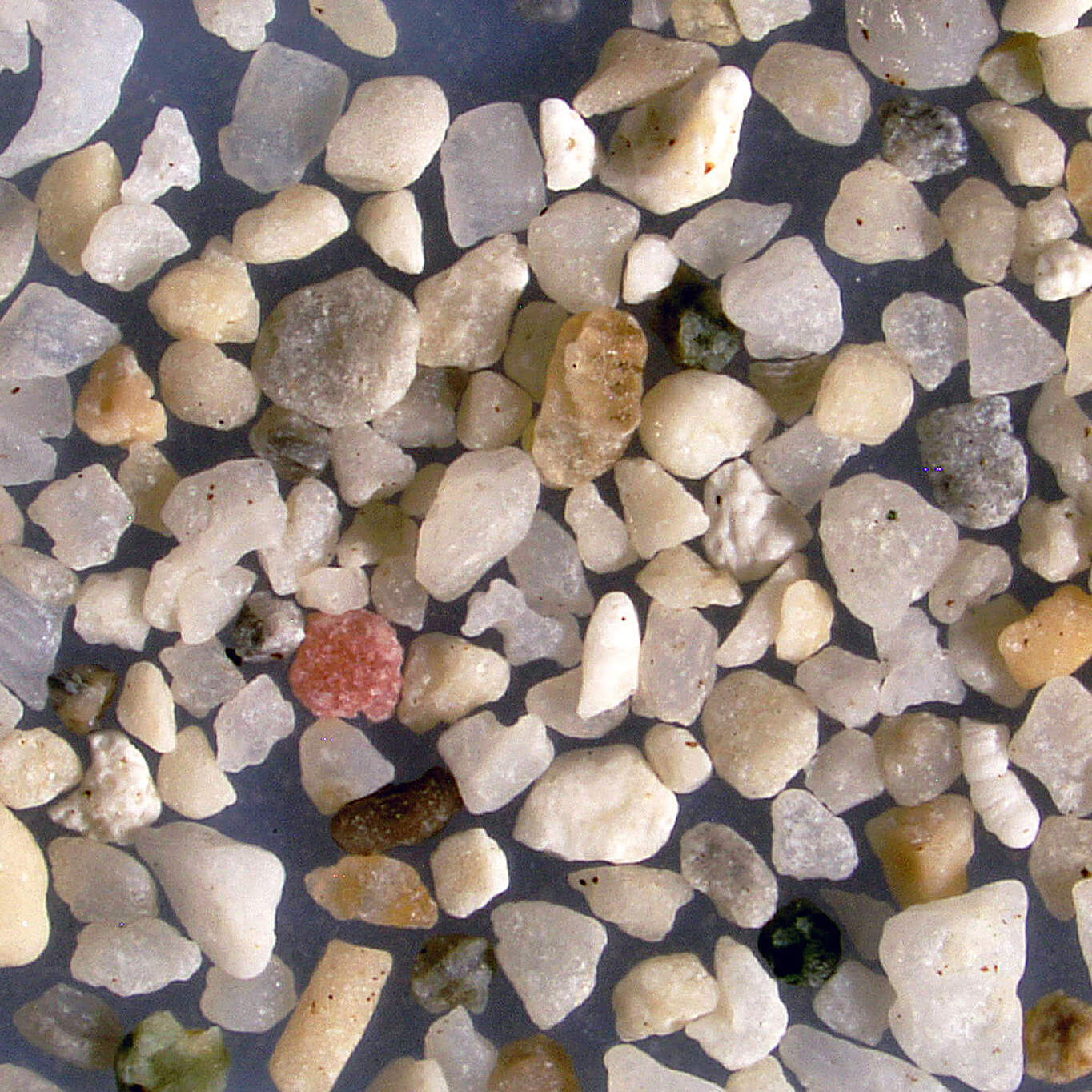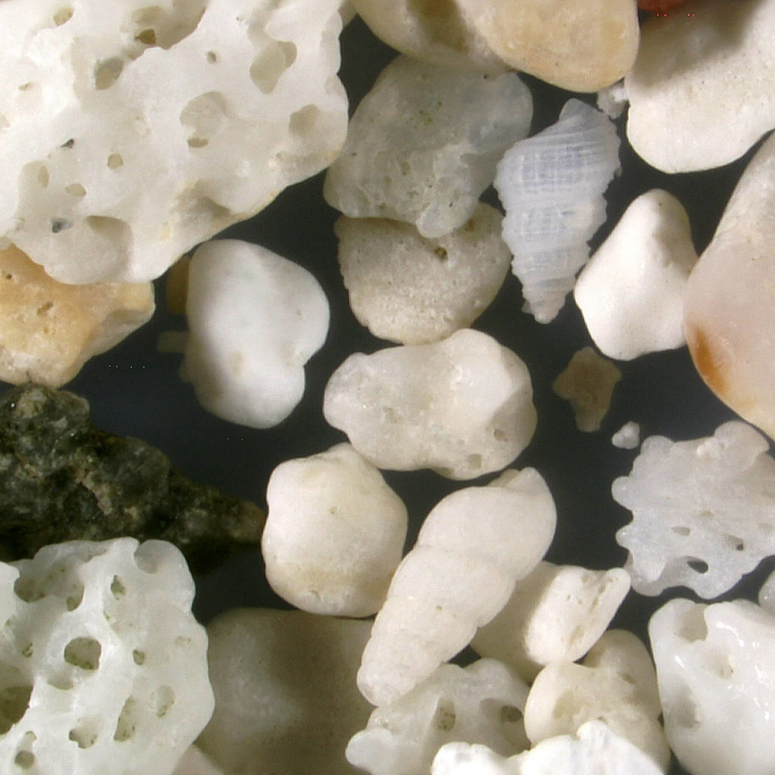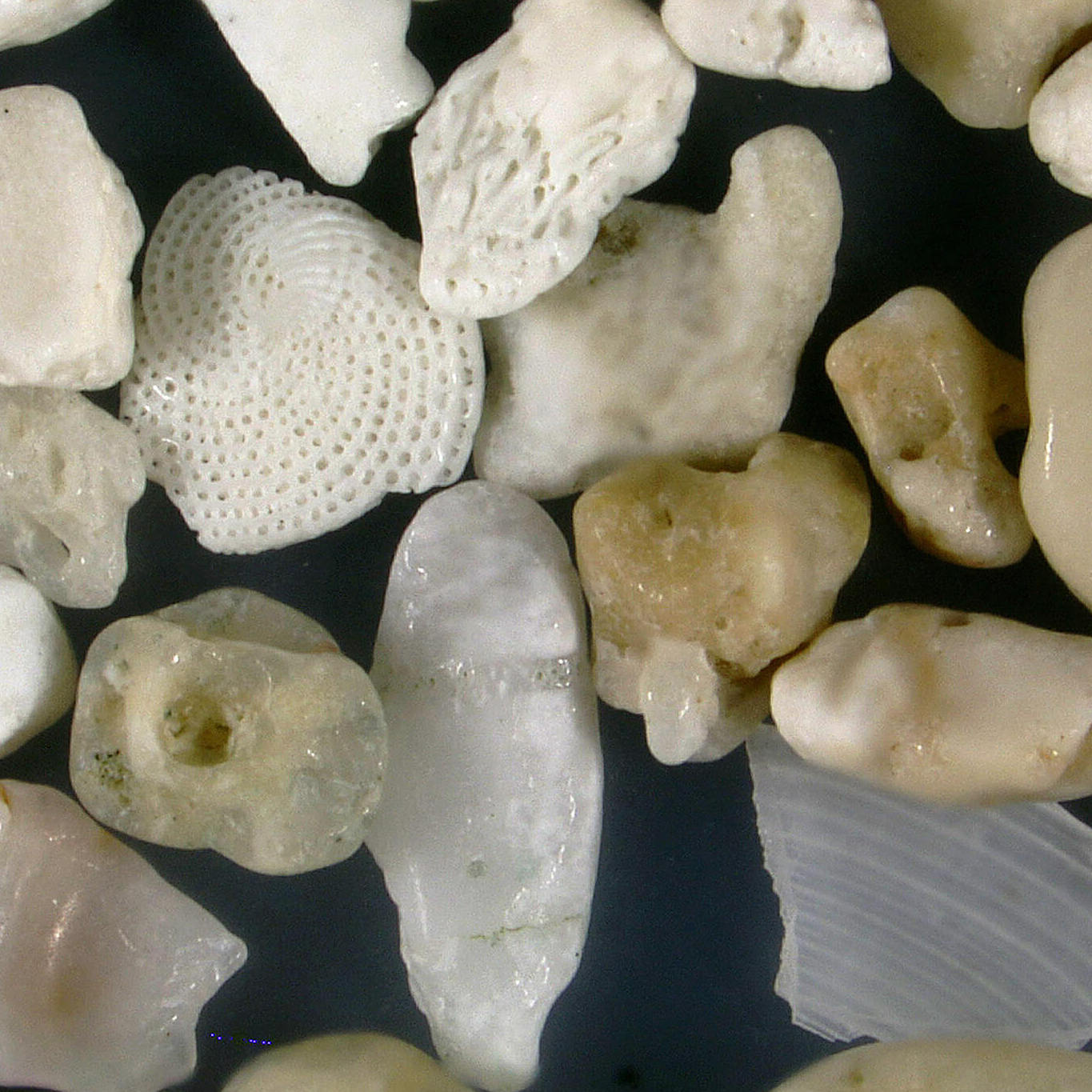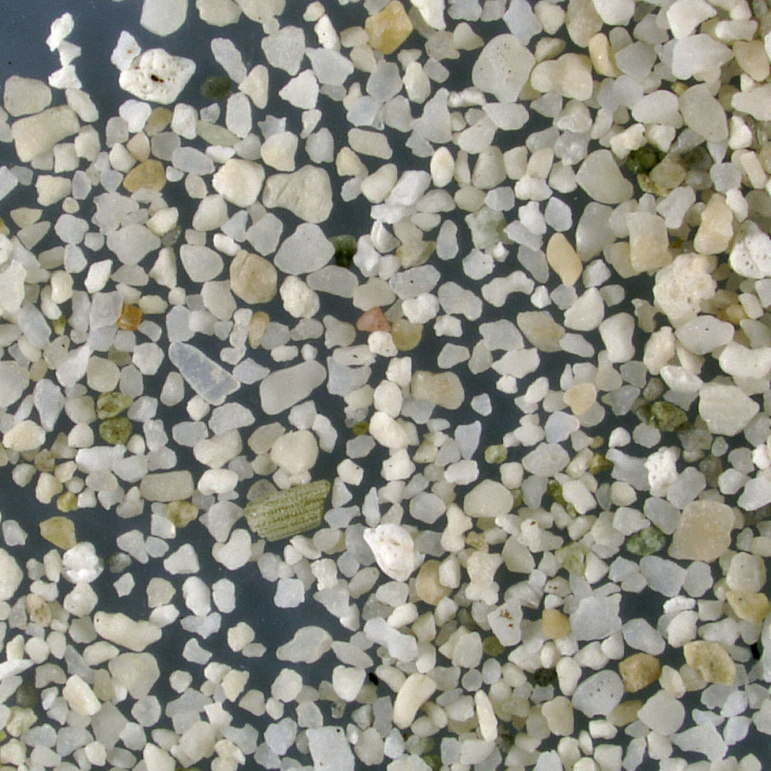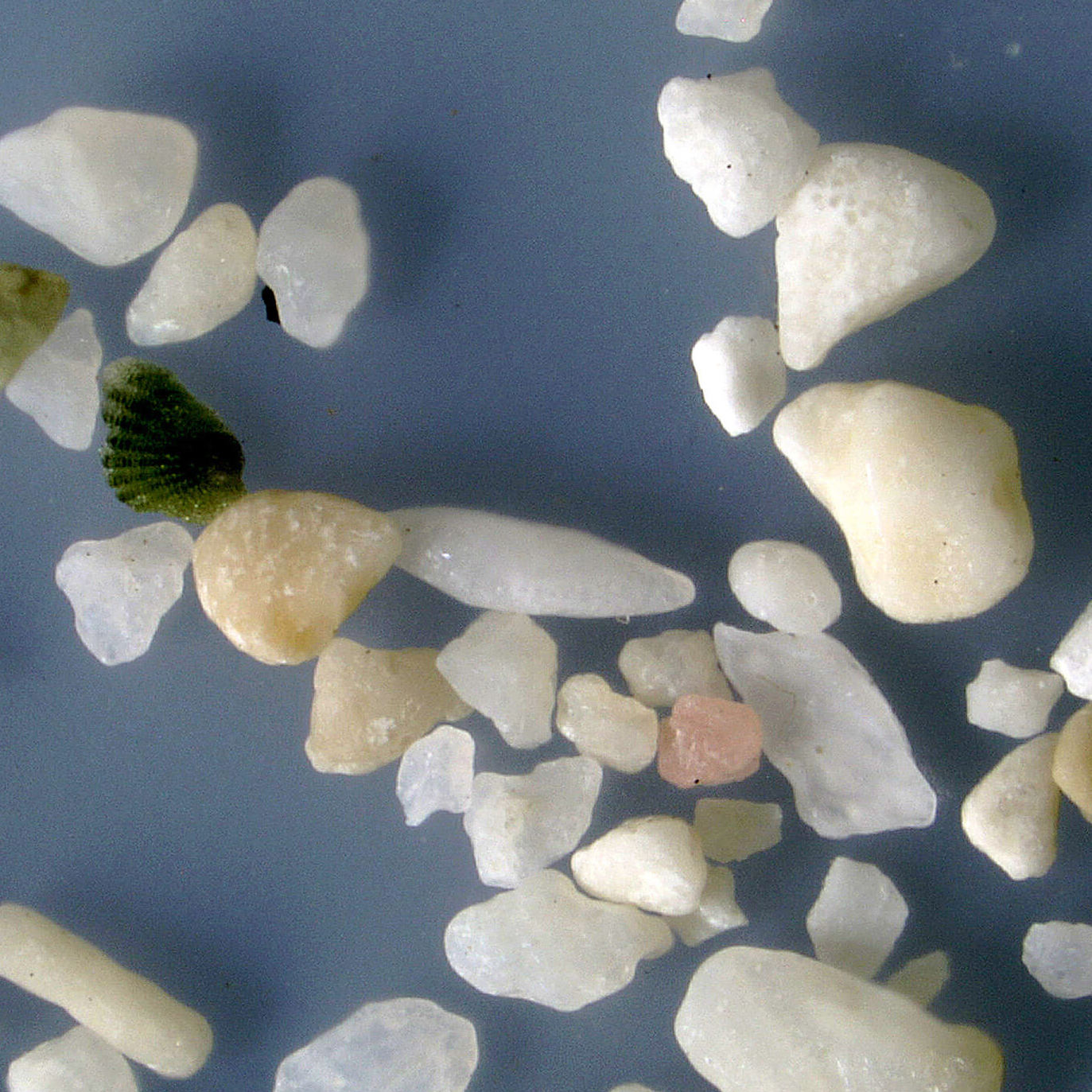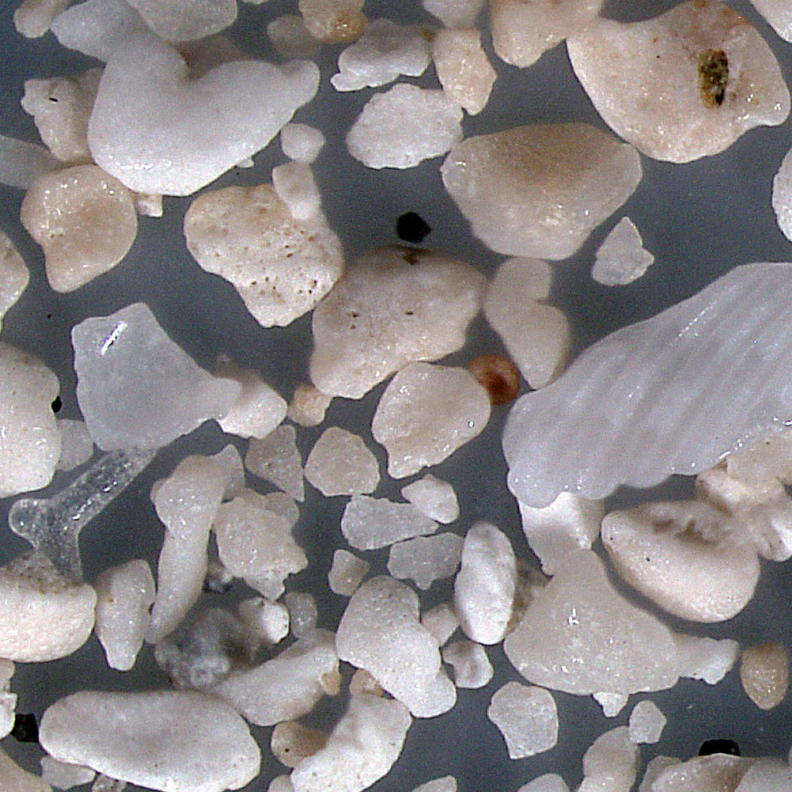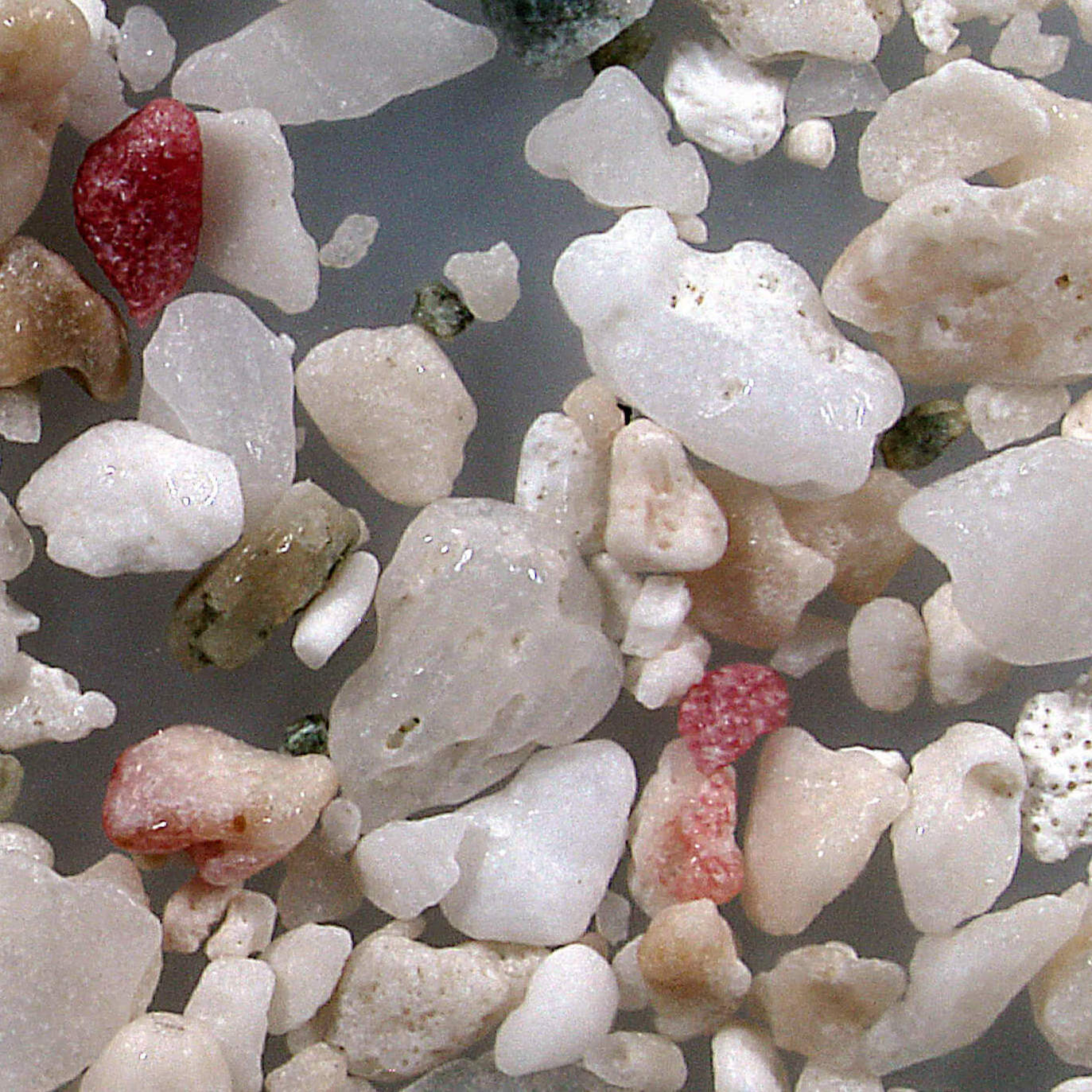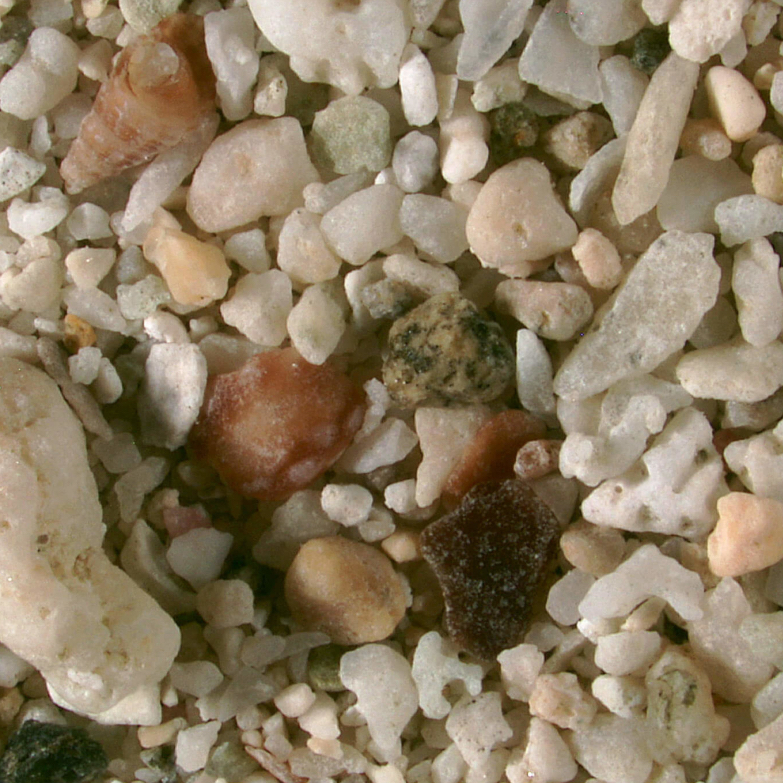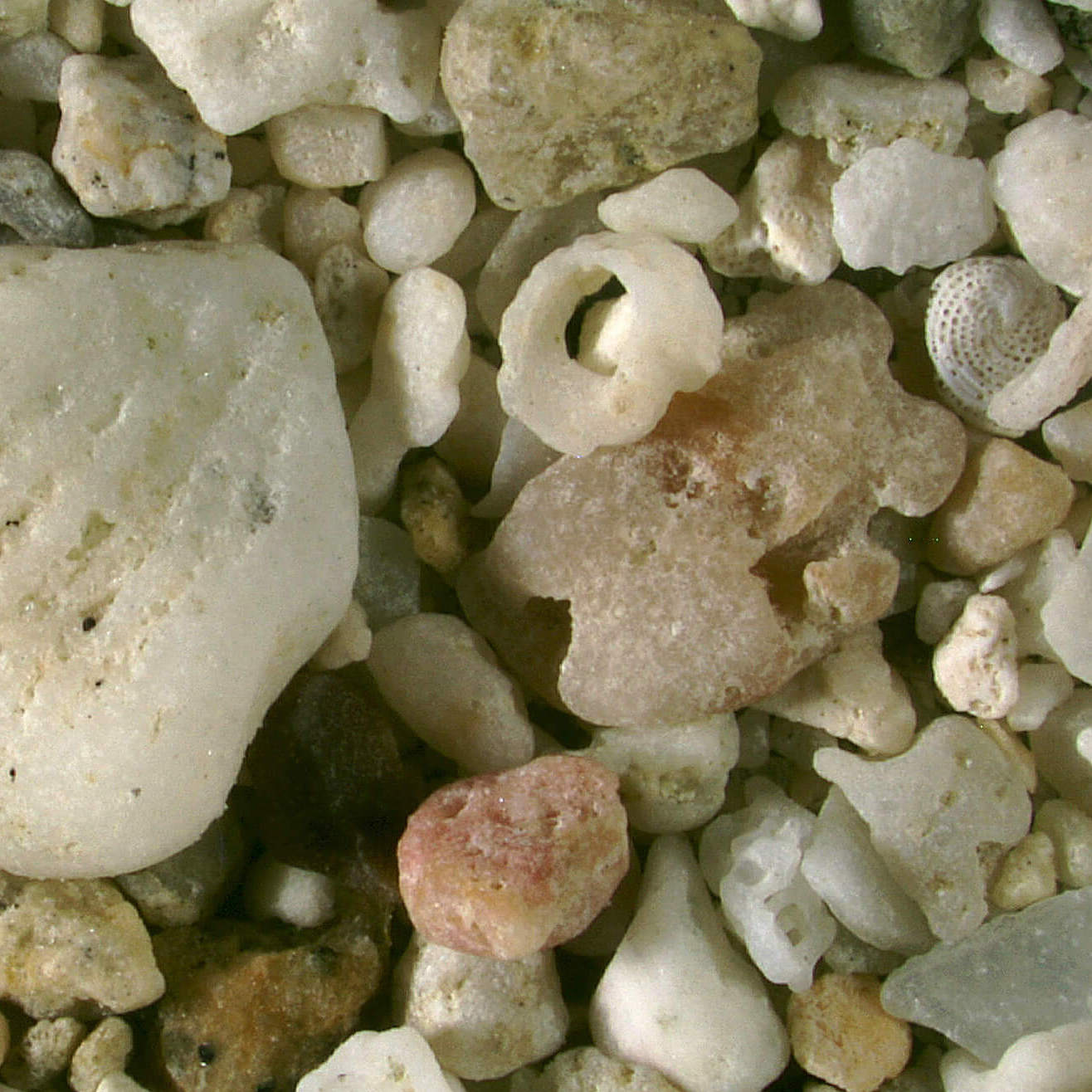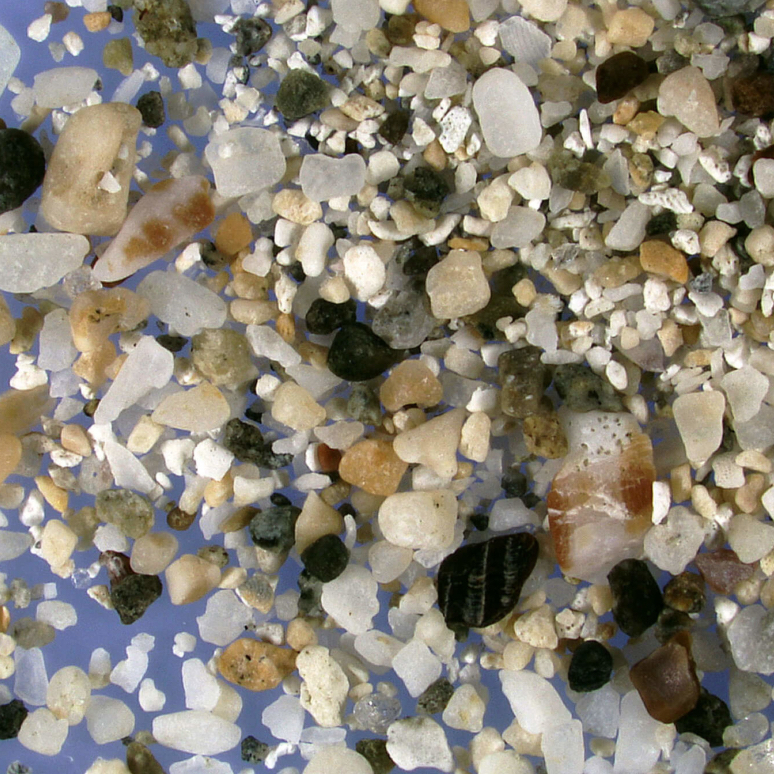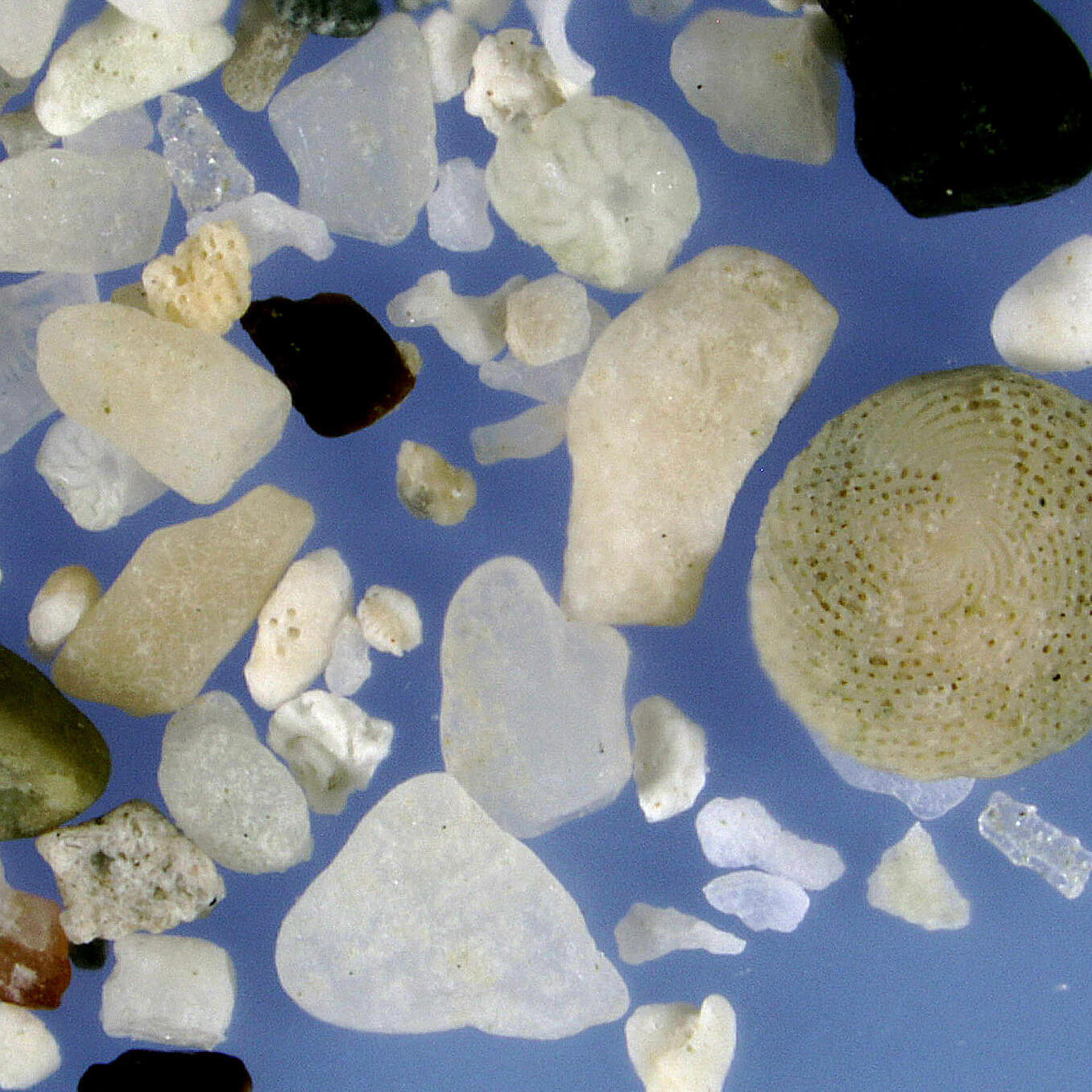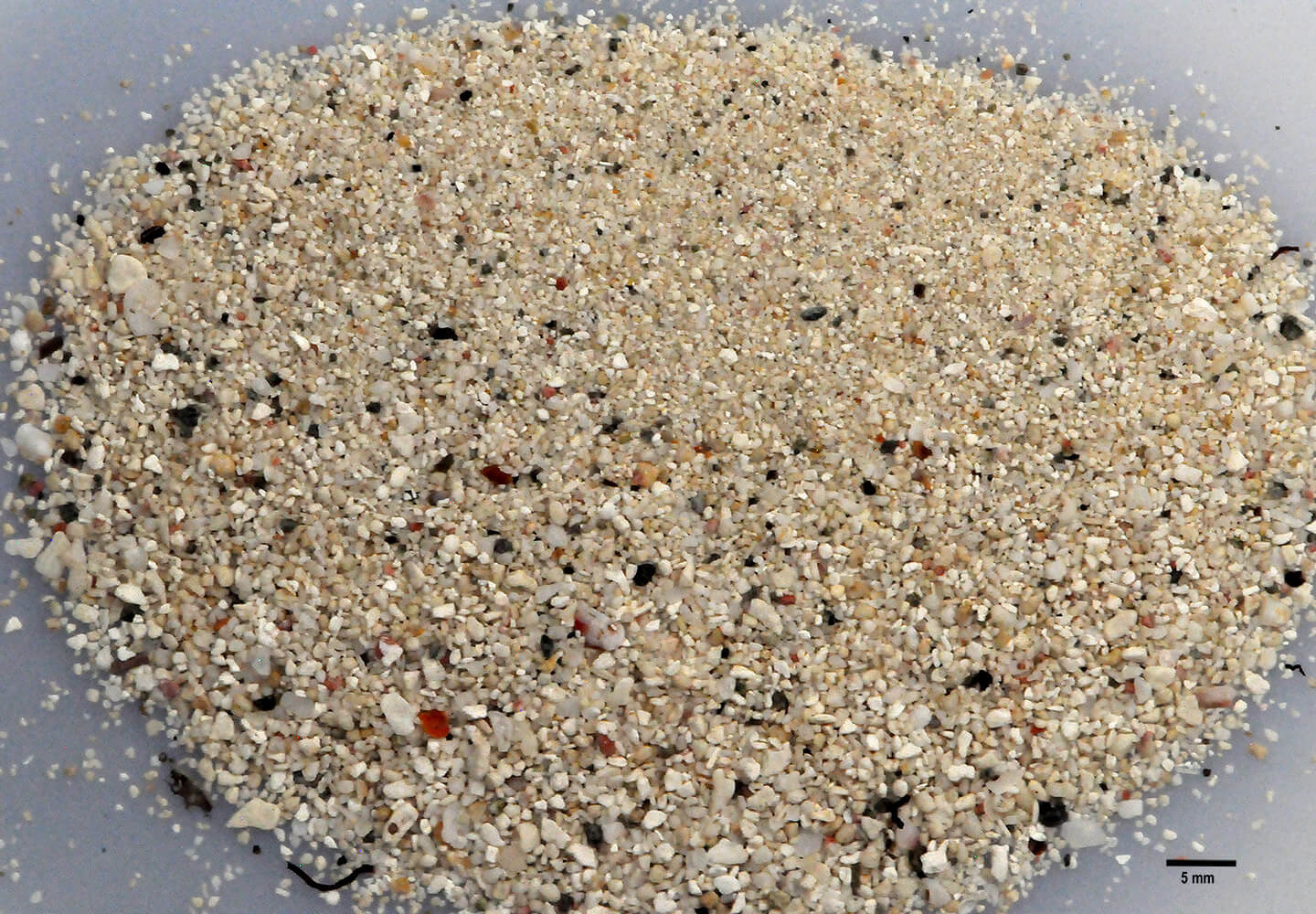
Although St. John is a volcanic island and part of a submarine mountain range extending from Cuba to Trinidad, sand on recreational beaches is primarily biogenic. Occasional black sand grains of volcanic origin are intermixed with a variety of white, tan, and reddish-brown grains of mollusks, white calcium carbonate skeletal remains of bleached coralline algae and other shell fragments.
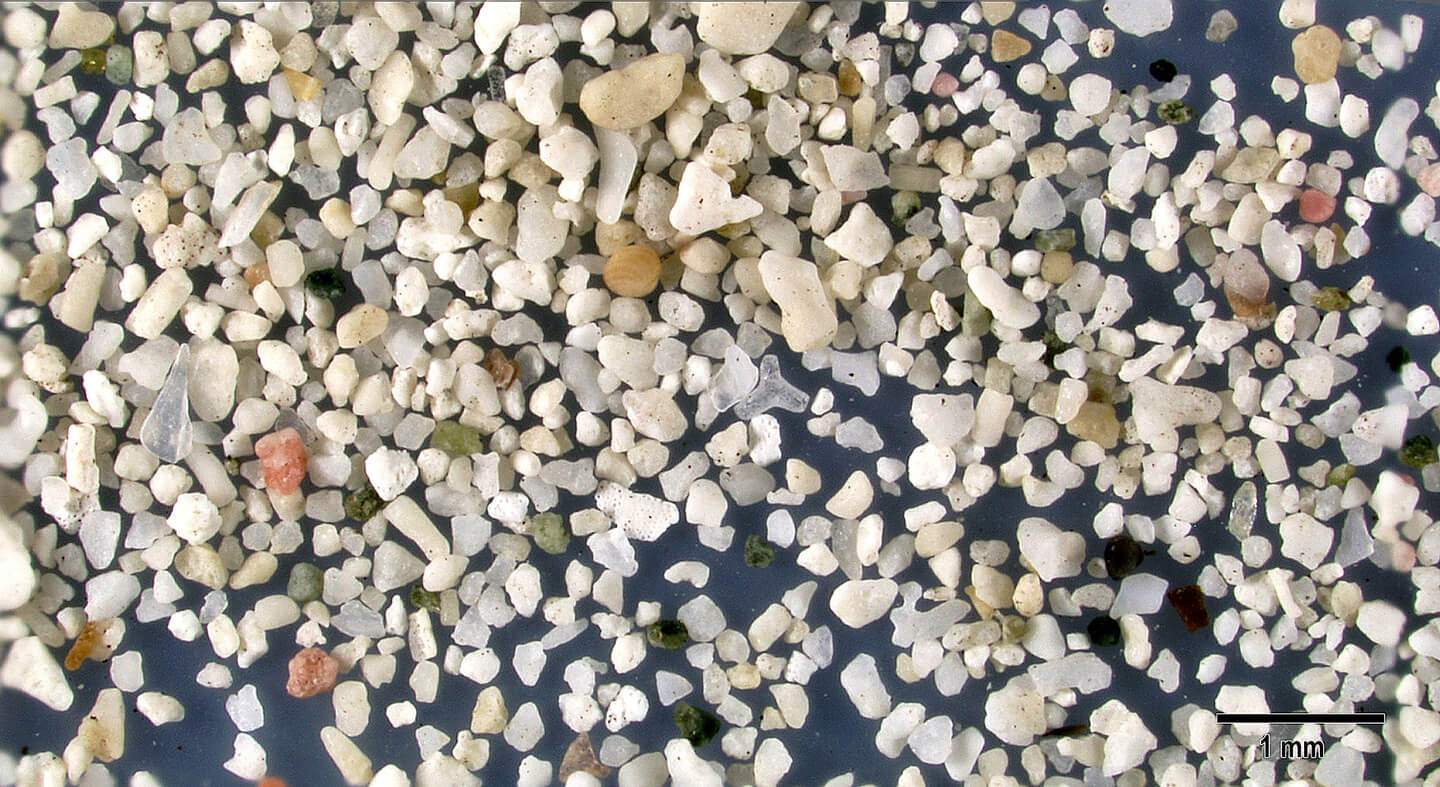
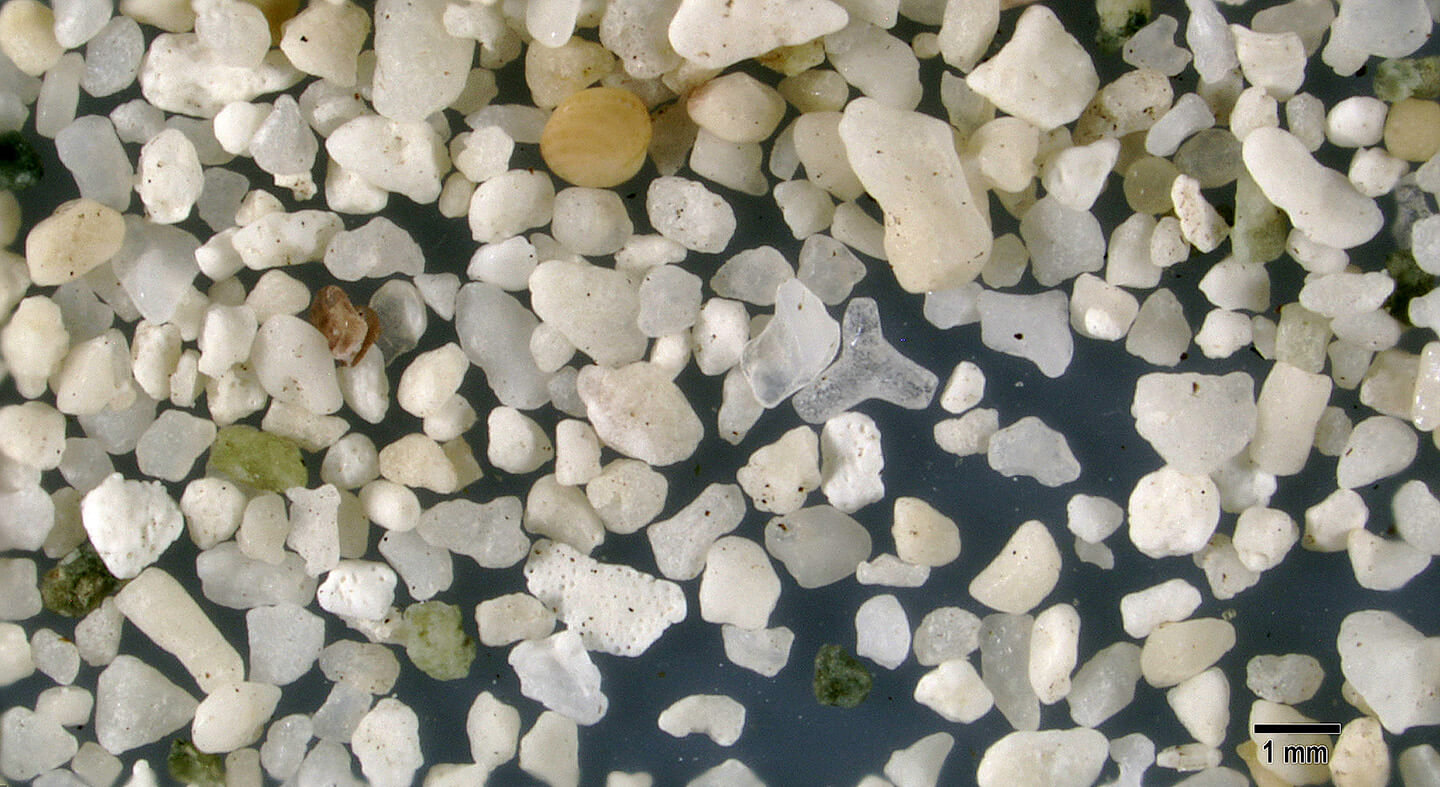
The low magnification displays a variety of organic sand grains including red foraminifera (forams), a clear triangular sponge spicule in the center, short rods of calcareous algae, and bits and pieces of coral. In the higher magnification the translucent sponge spicule is in the right center and a tan smoothly worn foram is in the upper left center. The short rod near the lower left corner is calcified algae.
Geographic Overview
Only 9 miles long and 2 miles wide, St. John boasts of lush emerald mountains, hills and valleys without many flat areas, and soft white coral sands on numerous near-deserted tranquil beaches. The coast has coral reefs full of sea life with coastal areas characterized by many protected bays. Trunk Bay is a top attraction for swimming and snorkeling.
Sand Gallery
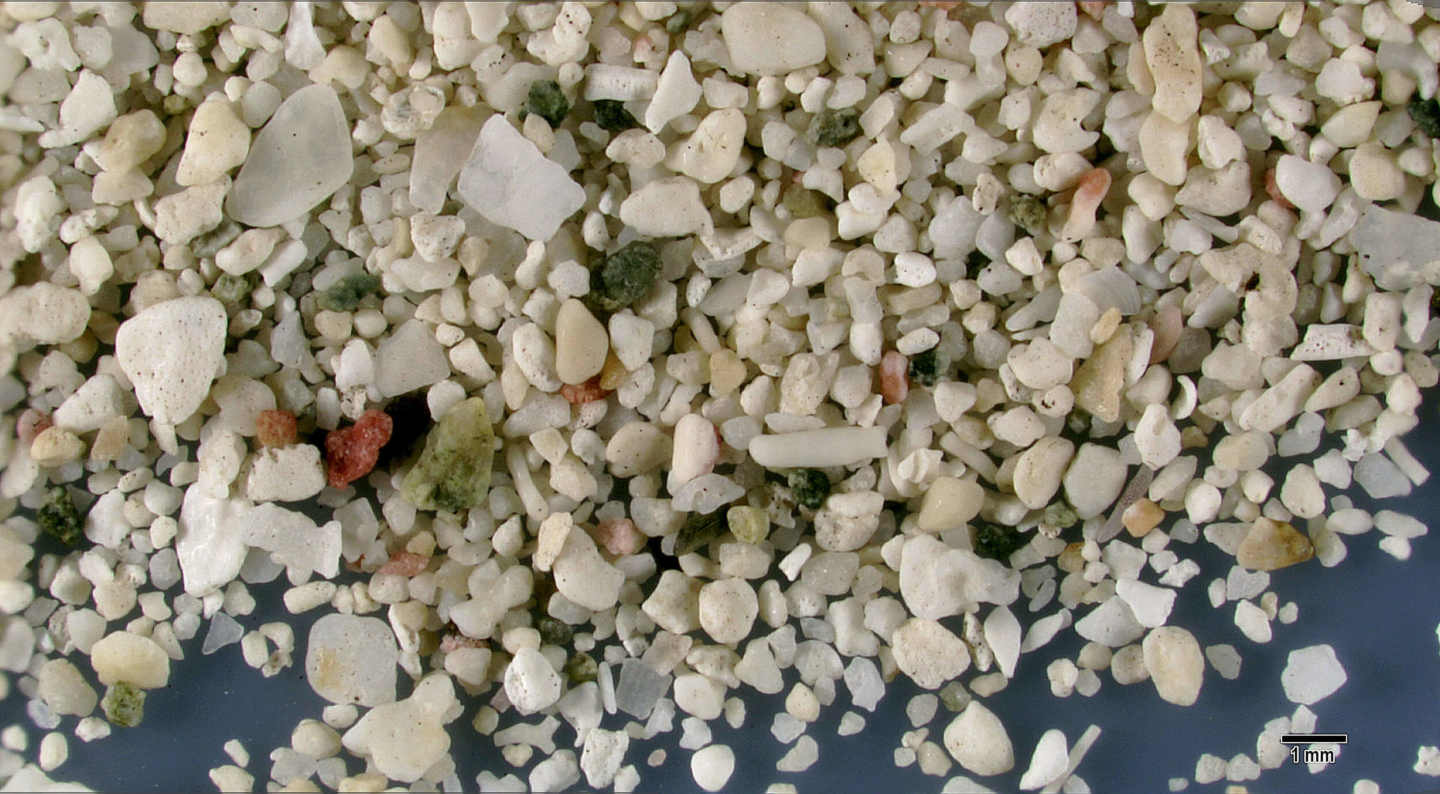
Larger white and translucent grains are shards of shells. The highly perforated rectangular fragment at 9 o’clock may be a calcified bryozoan with a red foram (Homotrema sp) to its right. Darker greenish-black fragments are likely volcanic sand grains. A short rod of calcareous algae is just below center and slightly to the right.
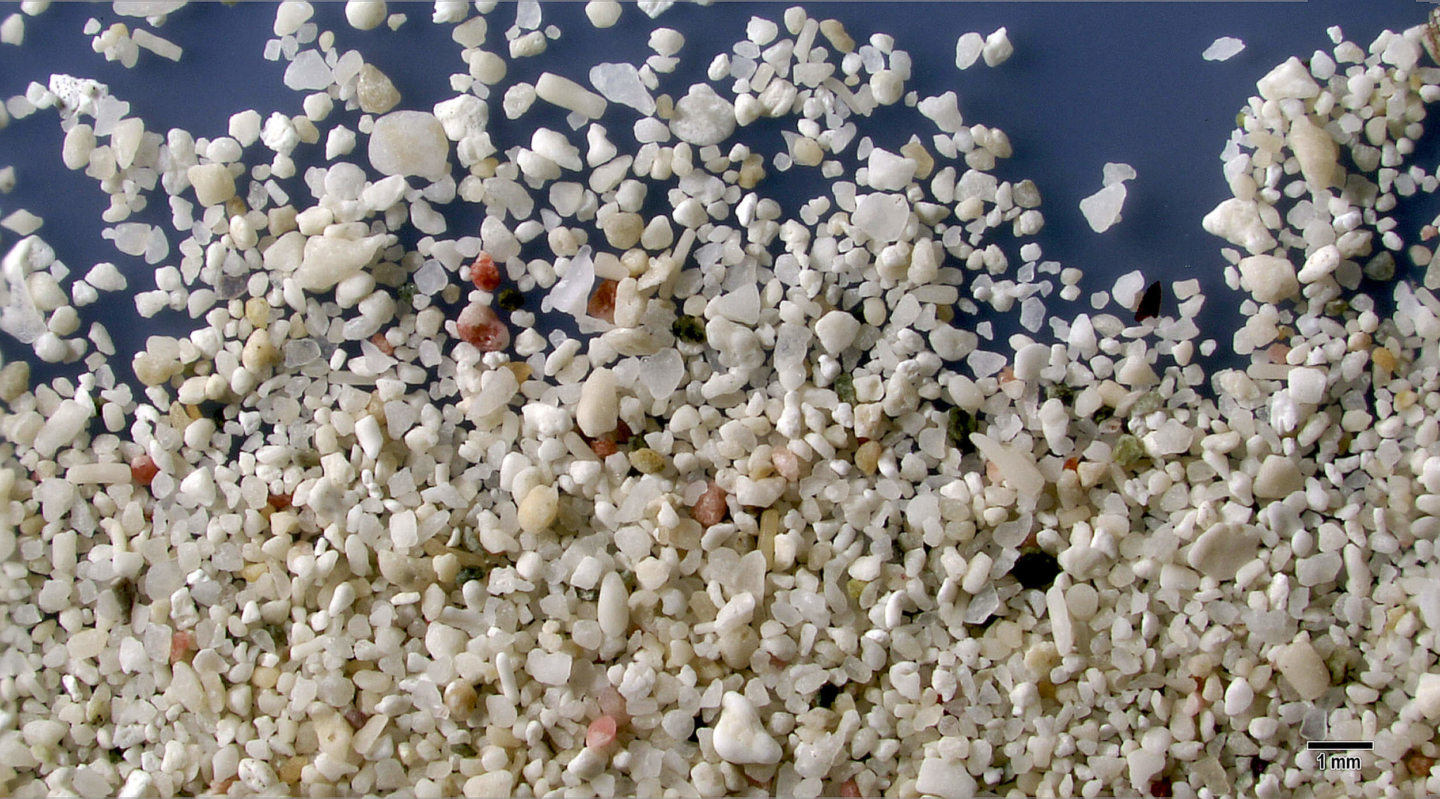
In this low magnification there is a mixture of mostly well-rounded sand grains including various pieces of coral, short rods that are remains of calcified algae, fragments of mollusk shells, and red fragments of coralline algae. An occasional black sand grain is likely of volcanic origin.
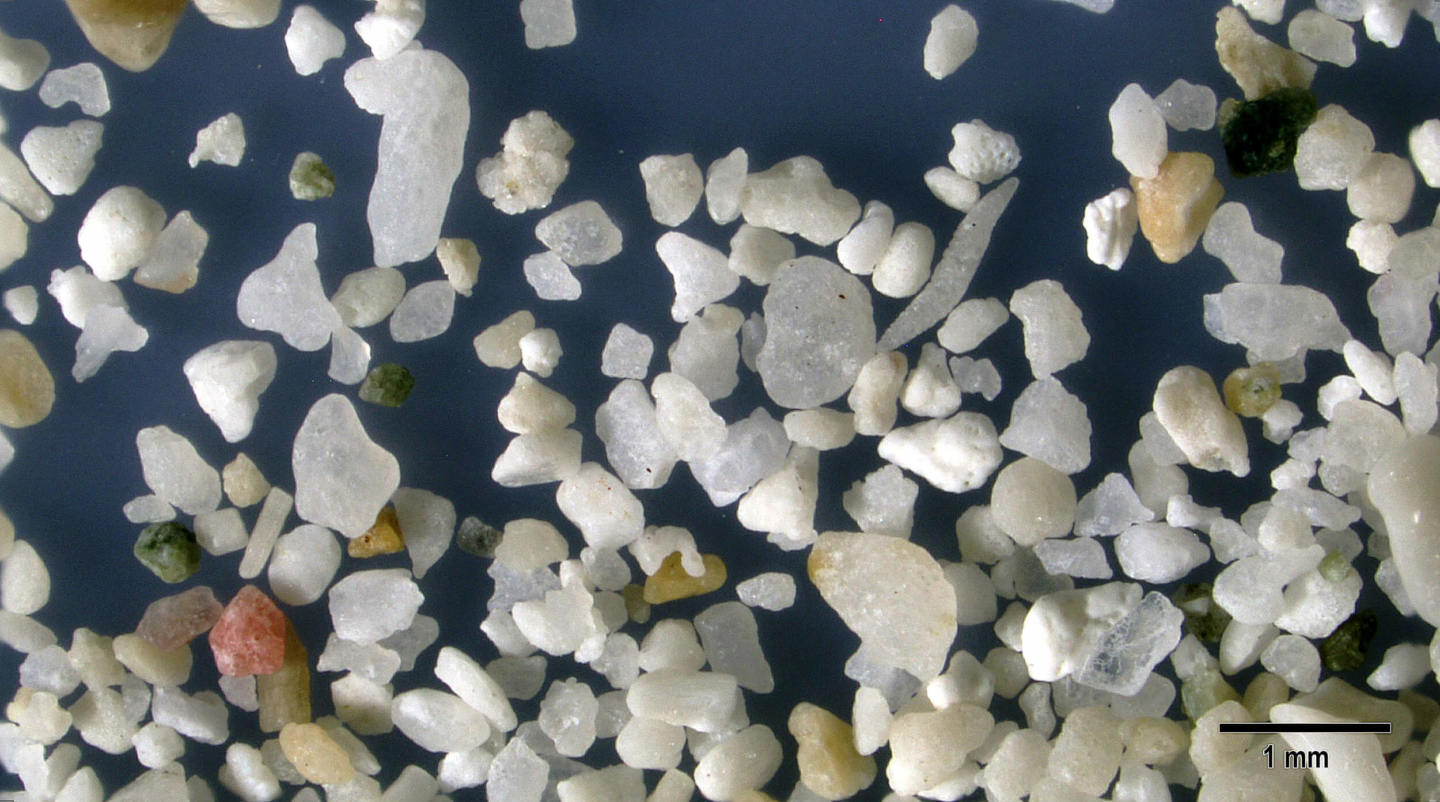
Among the various fragments of marine organisms is a prominent elongated octocoral sclerite spicule just to the upper right of center. A red fragment of coralline algae is at 7 o’clock near a greenish black sand grain likely of volcanic origin.
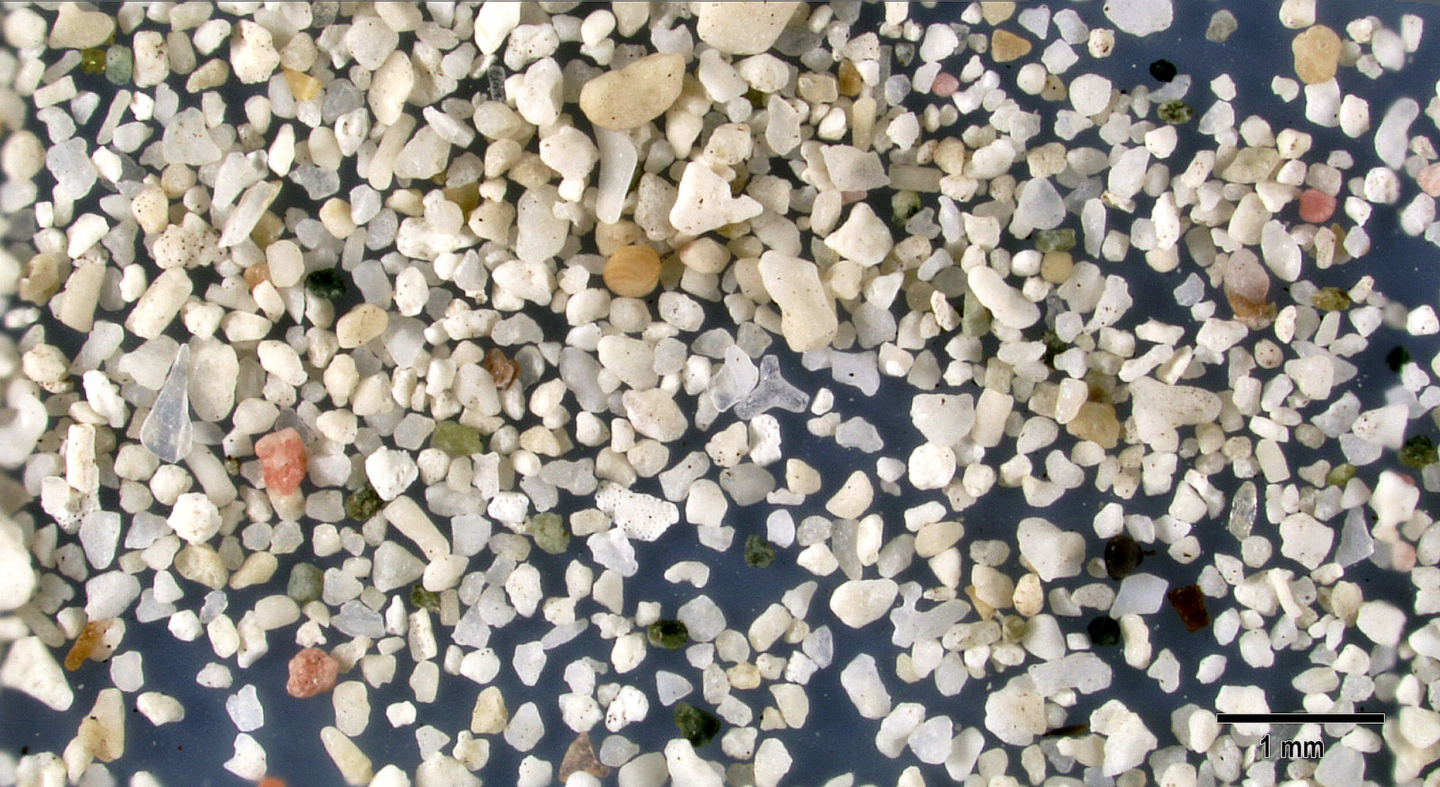
Low magnification with a variety of organic sand grains including red foraminifera (forams), a tan smoothly worn foram at upper left of center, a clear triangular sponge spicule in the center, short rods of calcareous algae, and bits and pieces of coral.
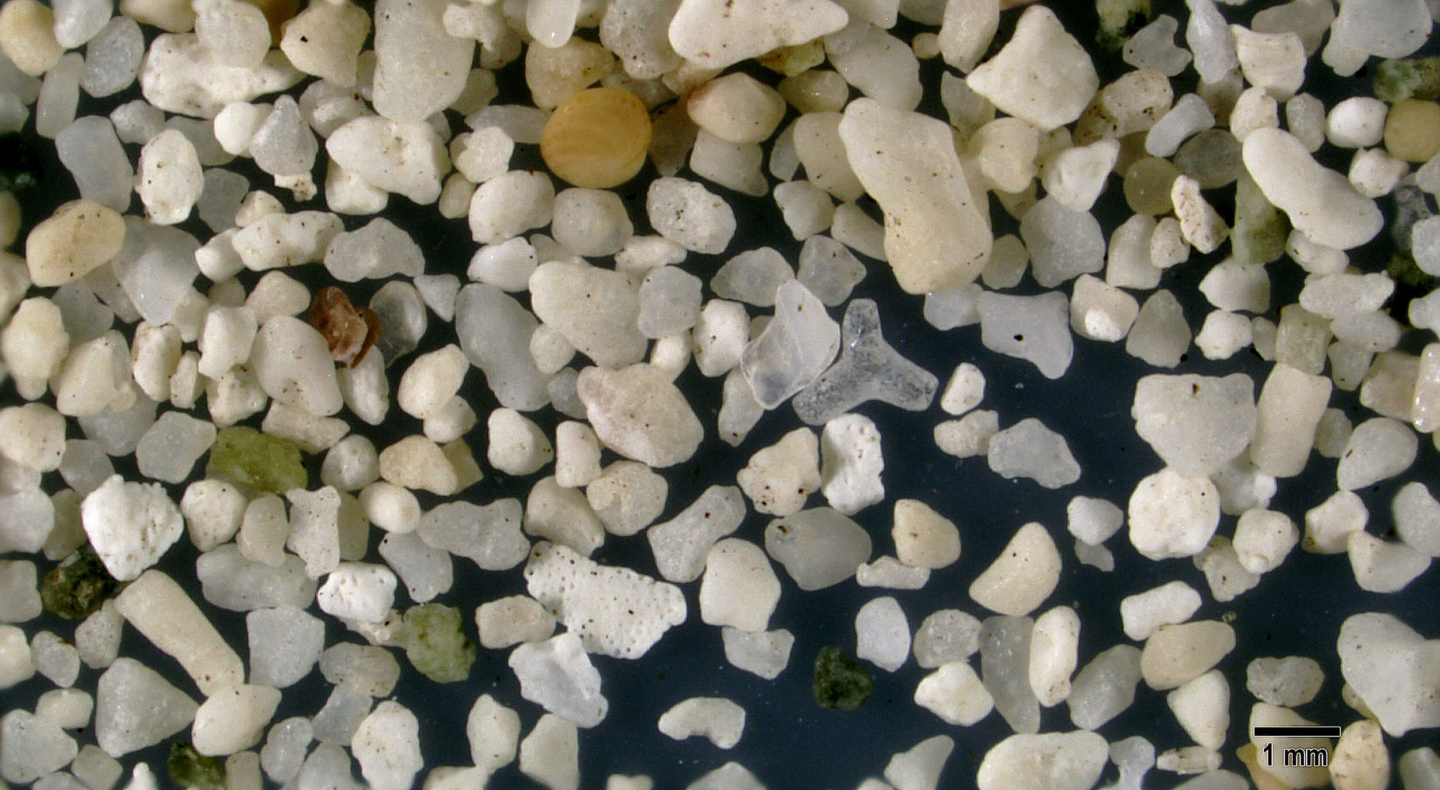
In this higher magnification of the above the translucent triangular sponge spicule is in the center with the tan smoothly worn foram in the upper left center. A highly perforated white rectangular sand grain at lower left center is likely a calcified bryozoan. Many of the white grains are bleached coralline algae. The rod-shaped sand grain at lower left of the image is the remains of branching calcareous algae.

